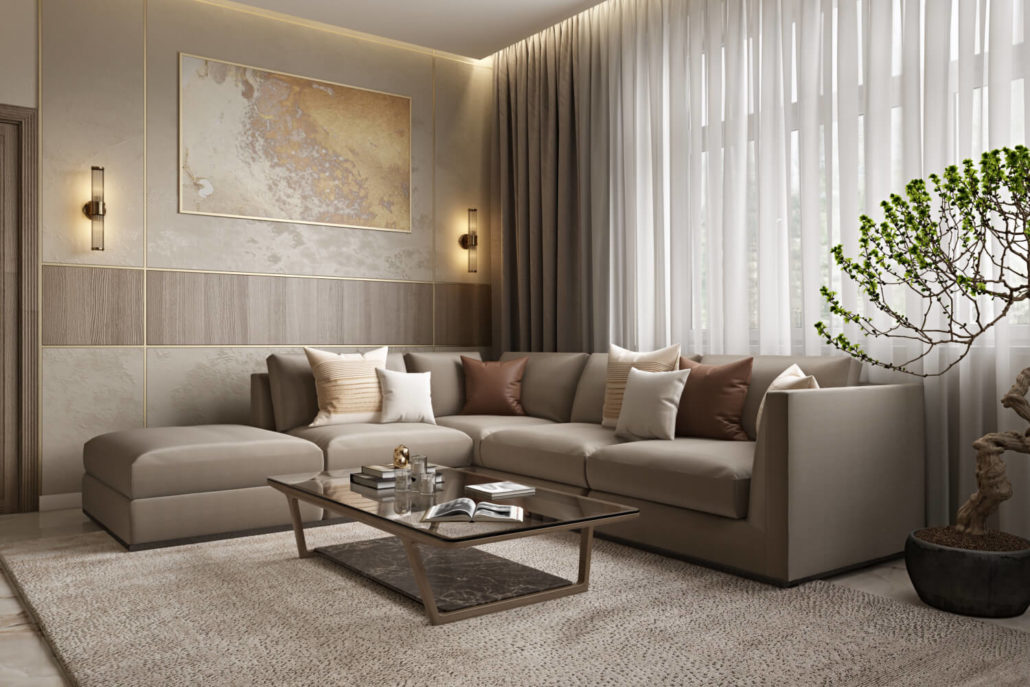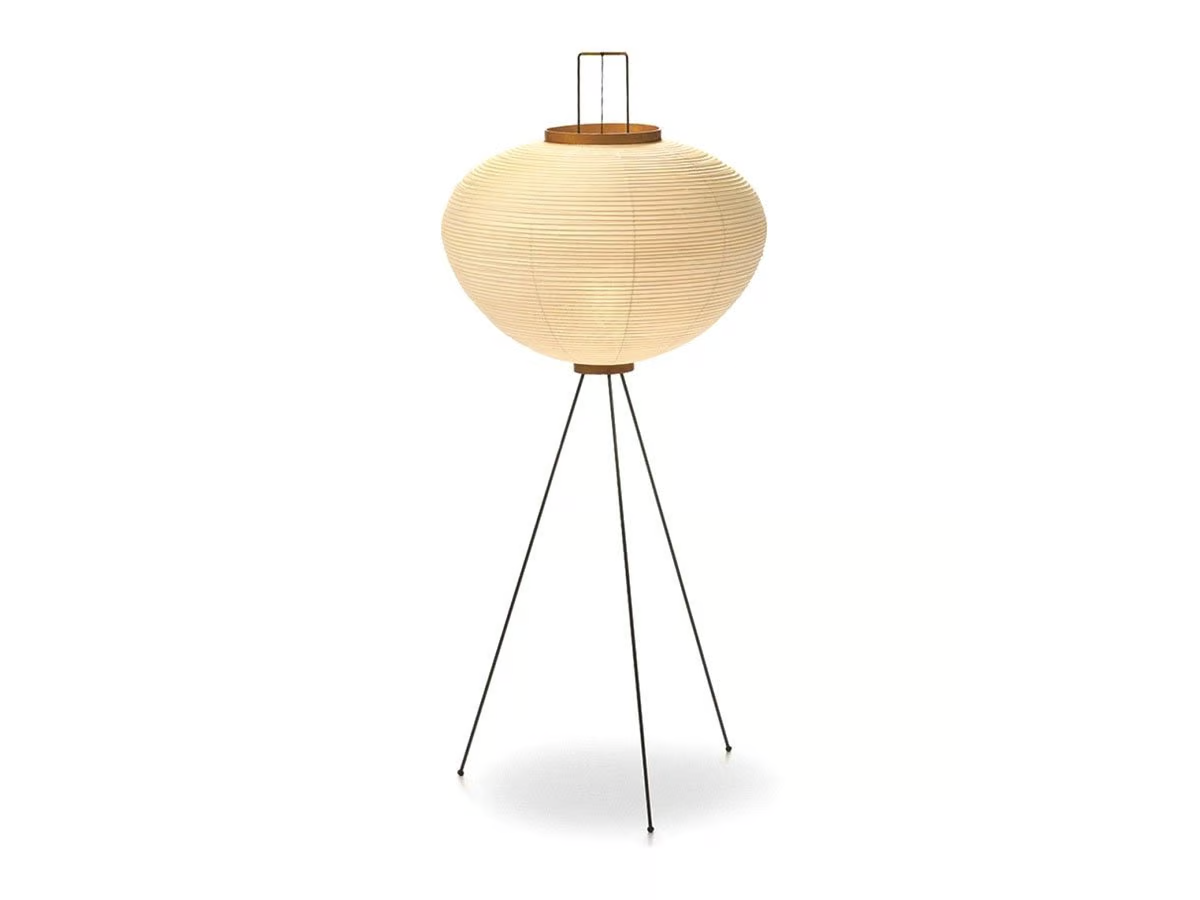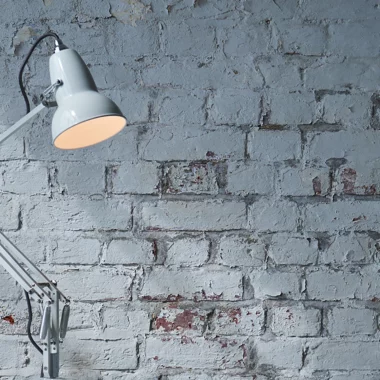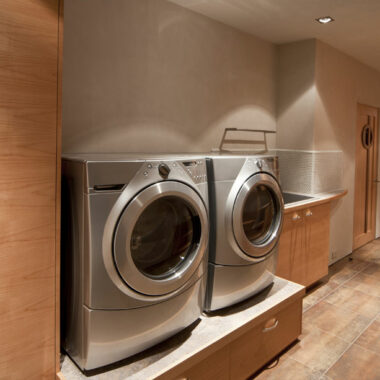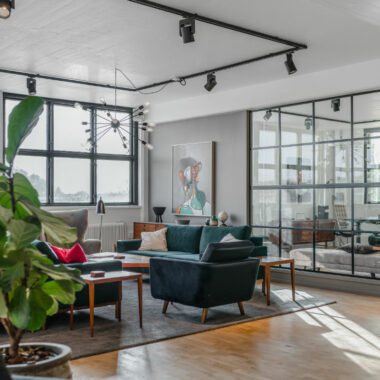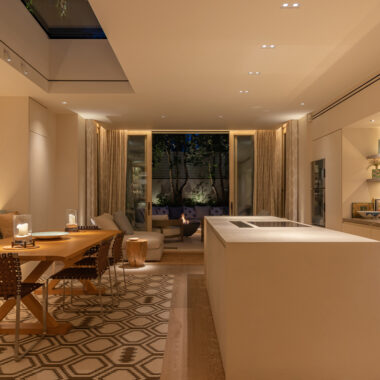Lighting is an essential element of interior design. Properly placed lamps can set the mood, enhance décor, highlight architectural details, and improve visibility. Knowing where to place table lamps in a living room allows you to make the space feel warm, functional, and stylish. Whether your room is large or small, the following guide will help you discover the best lamp placement for living rooms and transform your home with thoughtful lighting.
Best Lamp Placement for Living Rooms
a. Floor Lamp Placement
Floor lamps are perfect for providing vertical light while saving table space. To achieve the best lamp placement for living rooms, follow these strategies:
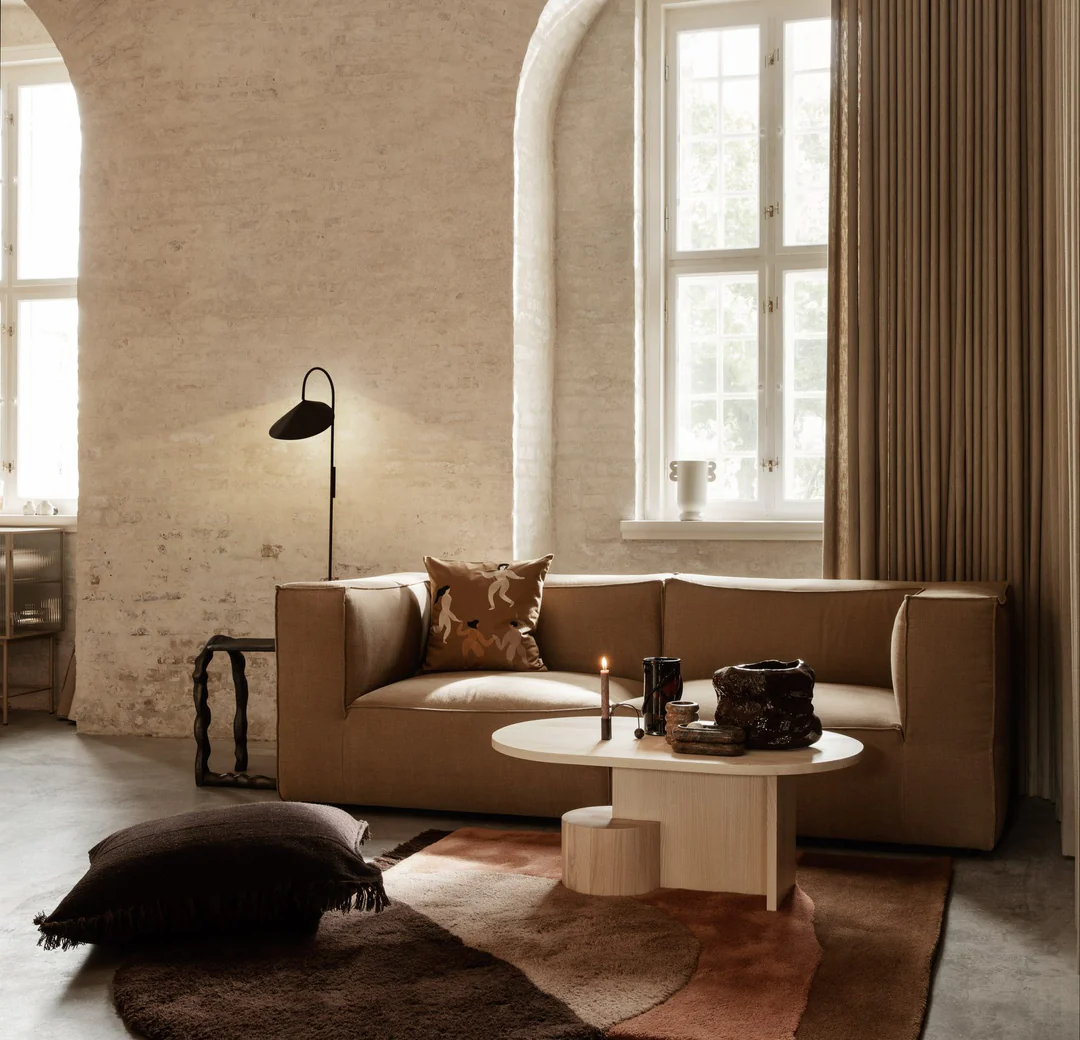
Ferm Living Arum Floor Lamp
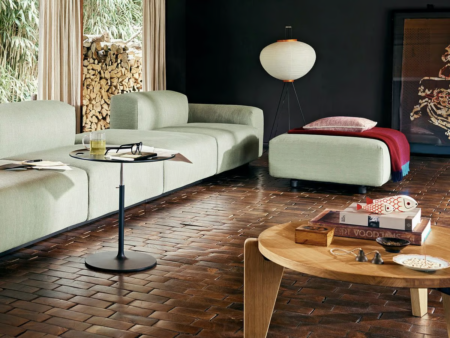
Vitra Akari 10A Floor Lamp
- Near Corners or Walls: Place floor lamps near corners to brighten dark spaces without cluttering walkways.
- Spacing in Large Rooms: For larger living rooms, add one floor lamp per 10 square meters (about 100 feets) to distribute light evenly.
- Small Living Rooms: Use slim, minimalist floor lamps to avoid overcrowding. If you’re wondering how to arrange floor lamps in a small living room, restrict placement to one main lamp near a sofa or reading area.
For example, the Vitra Akari 10A Floor Lamp and the Ferm Living Arum Floor Lamp are more than just functional lighting — they’re statement pieces. Loved by design lovers and decorators alike, these sculptural floor lamps add elegance, softness, and character to any corner they illuminate.
b. Table Lamp Placement
Table lamps provide cozy, localized lighting and can enhance your furniture arrangement:
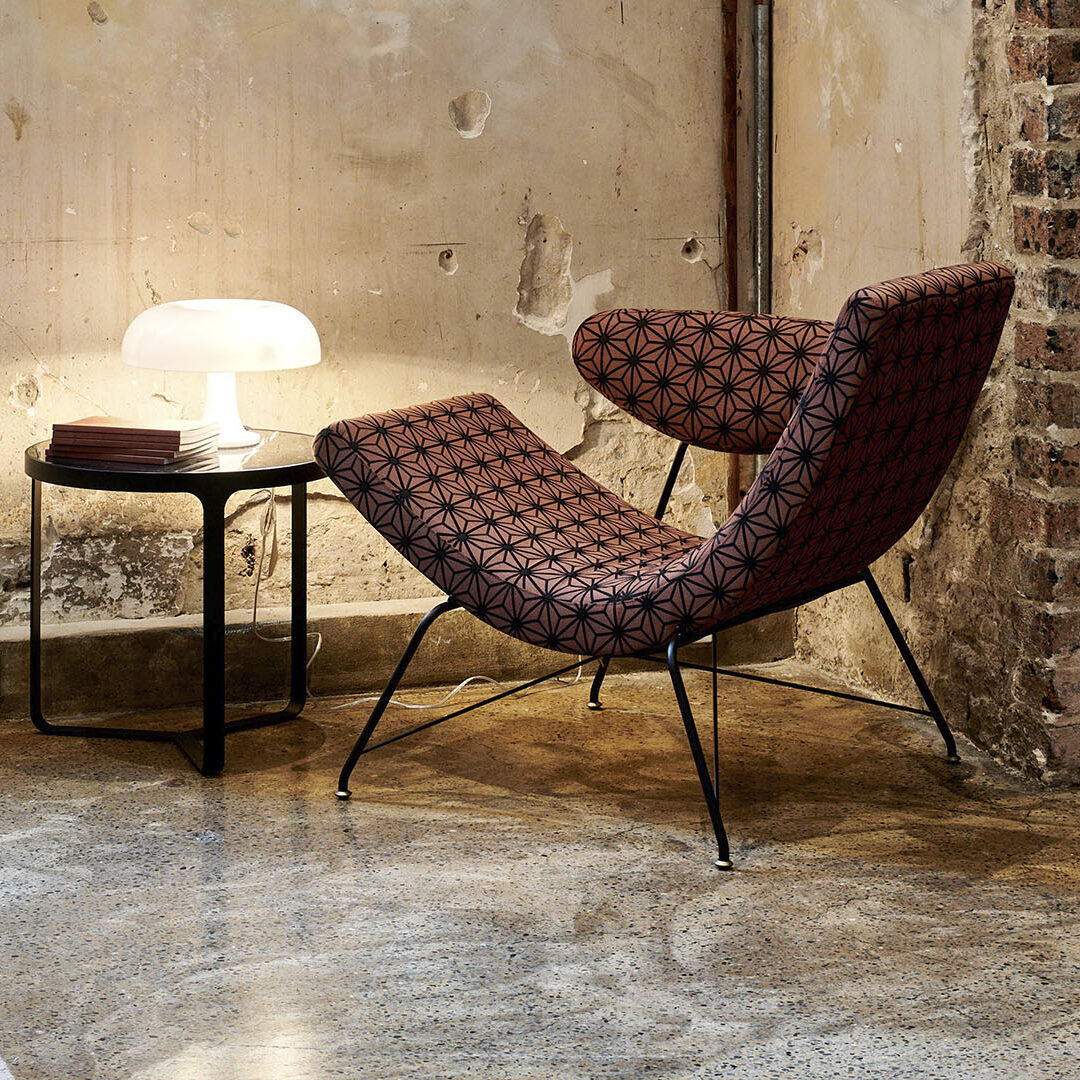
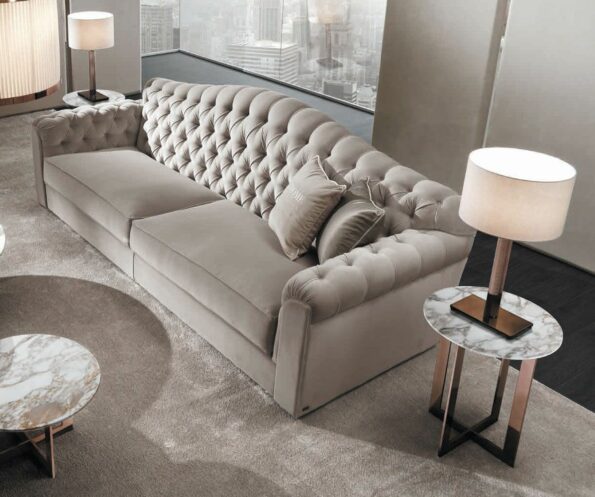
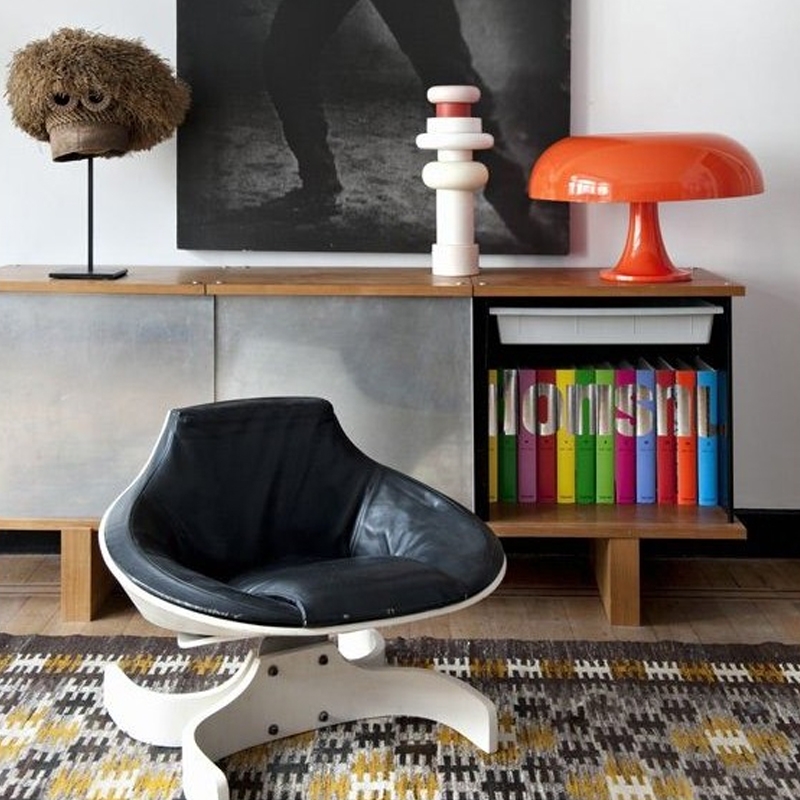
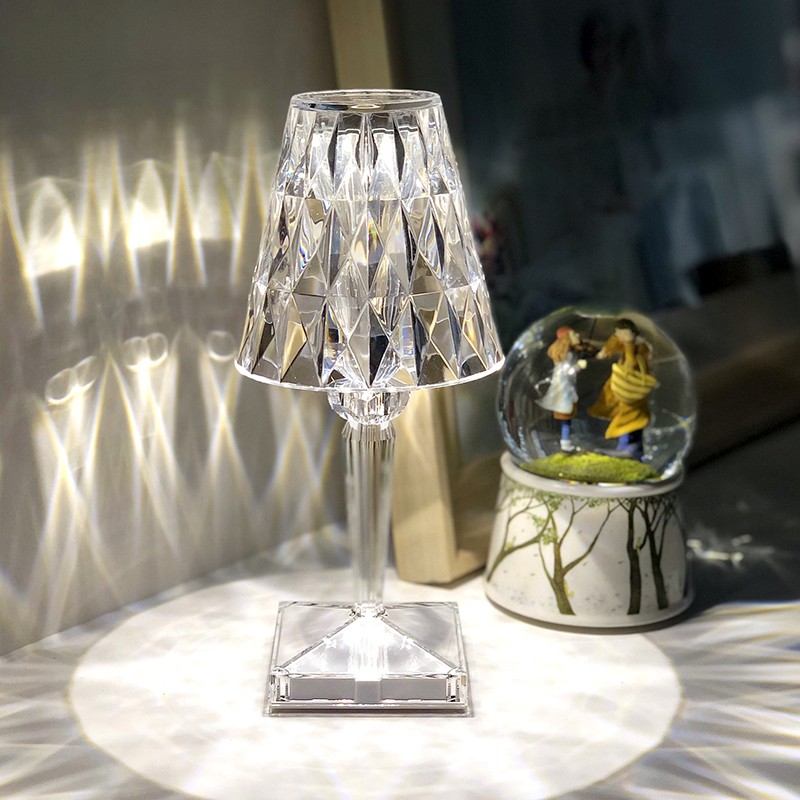
Kartell Battery Transparent Table Lamp
- On End Tables: Position table lamps on end tables beside sofas or armchairs for functional and aesthetic purposes.
- Balance Placement: Use pairs of table lamps on opposite sides of the room to balance lighting, especially in symmetrical layouts.
- Accent Features: Place table lamps near artwork or decorative items to create a visual focal point.
Tip: Designer lamps like the Artemide Nessino Table Lamp or the Kartell Battery Transparent Table Lamp are great for this purpose. Their unique shapes and colors draw attention to nearby artwork or objects while providing cozy localized light.
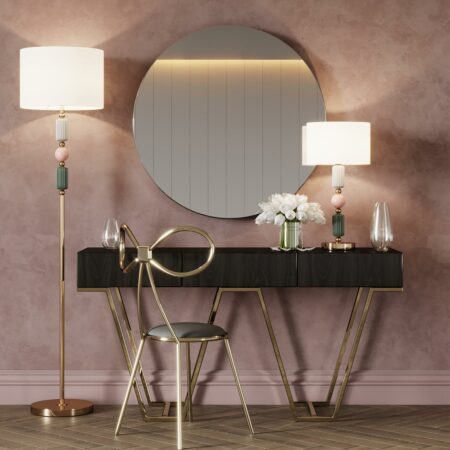
c. Experimenting with Lamp Heights
Adjust lamp heights to see how light interacts with your space. For example:
- Taller floor lamps diffuse light broadly, while shorter table lamps provide task lighting at specific spots.
- Combine both heights to layer lighting effectively.
Task Lighting: Creating a Functional Reading Area
Task lighting ensures clear, focused illumination for activities like reading, writing, or crafting. Proper placement enhances comfort and reduces eye strain.
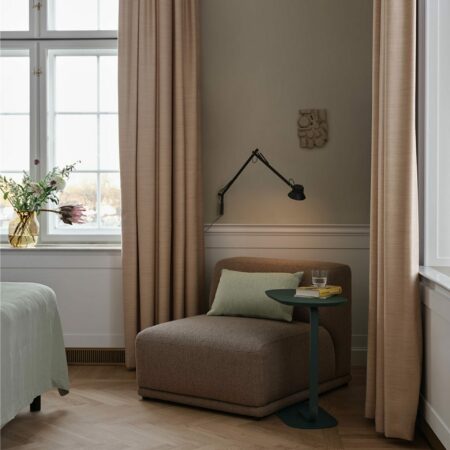
Muuto Dedicate Wall Lamp – S2
859,00 €on mohd.it
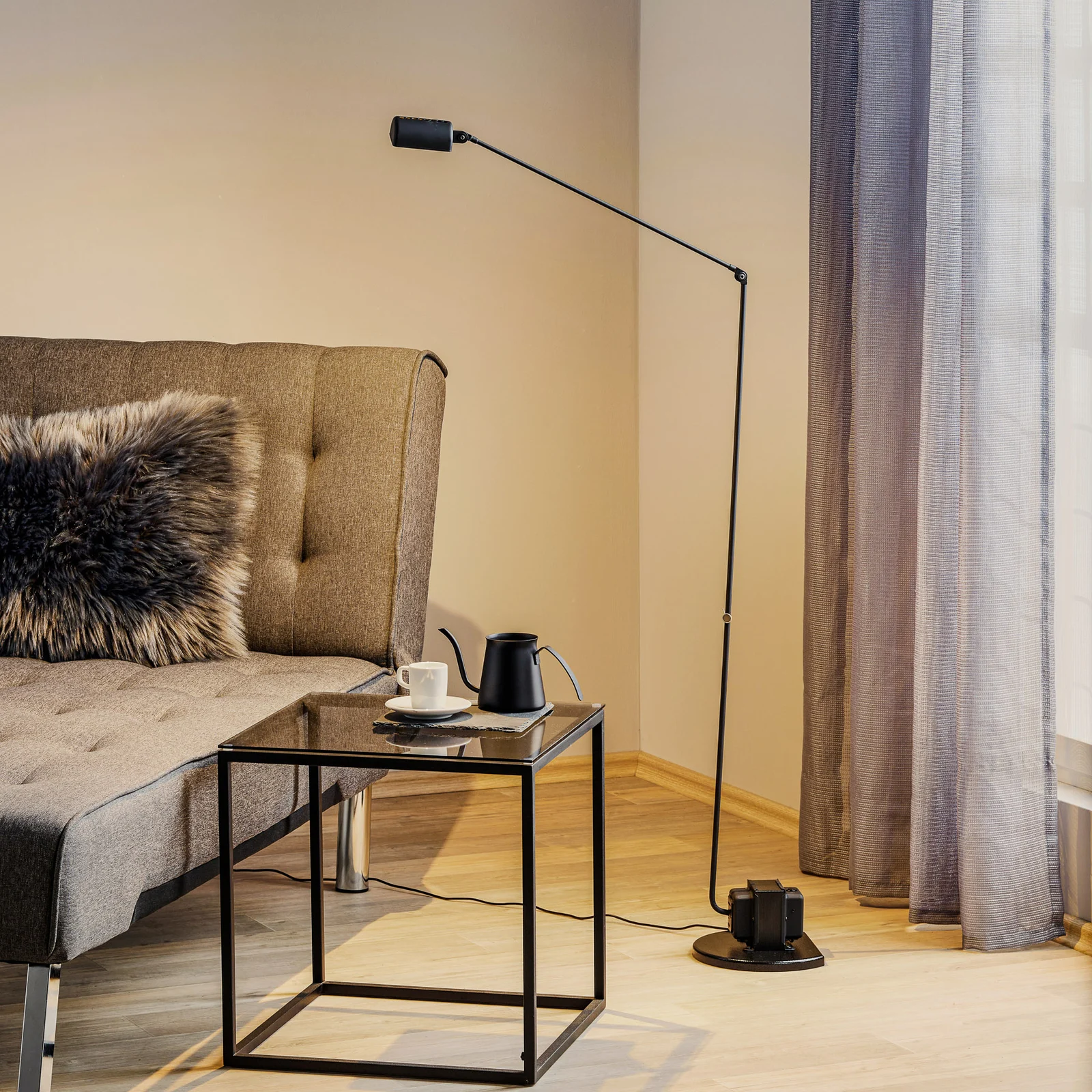
Lumina Daphine Cilindro Table Lamp
859,00 €on mohd.it
a. Ideal Lamp Positions for Reading Areas
- Place table lamps 45 centimeters (about 18 inches) away from your reading material for the best visibility.
- Position the lamp to the side and slightly behind the seating area to prevent glare.
- If you’re right-handed, position the lamp on your left side to minimize shadows while holding a book.
b. Choosing the Right Lamps for Tasks
- Use lamps with adjustable arms or swivel heads to direct light exactly where needed.
- Opt for bulbs with 40–60 watts for most readers. For older individuals or those who prefer brighter lighting, consider up to 75 watts.
c. Flexible Placement
Table lamps are lightweight and portable, making them easy to reposition. This flexibility ensures you always have the right lighting for any task.
Cozy Corner Lighting Ideas
Empty corners can often feel dark and unused. Thoughtfully placed lamps can transform these spaces into inviting, functional nooks.
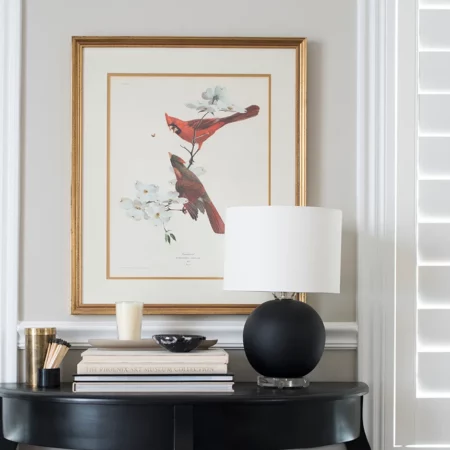
Benio Spherical Table Lamp
a. Small Table Lamp Arrangements
- Place a low-wattage table lamp on a corner table to add warmth and depth.
- Experiment with multiple lamps of varying heights and sizes on one table to create an artistic, layered look.
b. Choosing the Right Lighting
For maximum coziness, select lamps with:
- Soft white bulbs around 2700K for warm lighting.
- Fabric lampshades in muted tones to diffuse light gently.
c. Floor Lamps for Small Corners
- If the corner is too small for a table, use a slender floor lamp instead. Slim designs ensure the space remains visually open and clutter-free.

Flos Ray F1 Floor Lamp
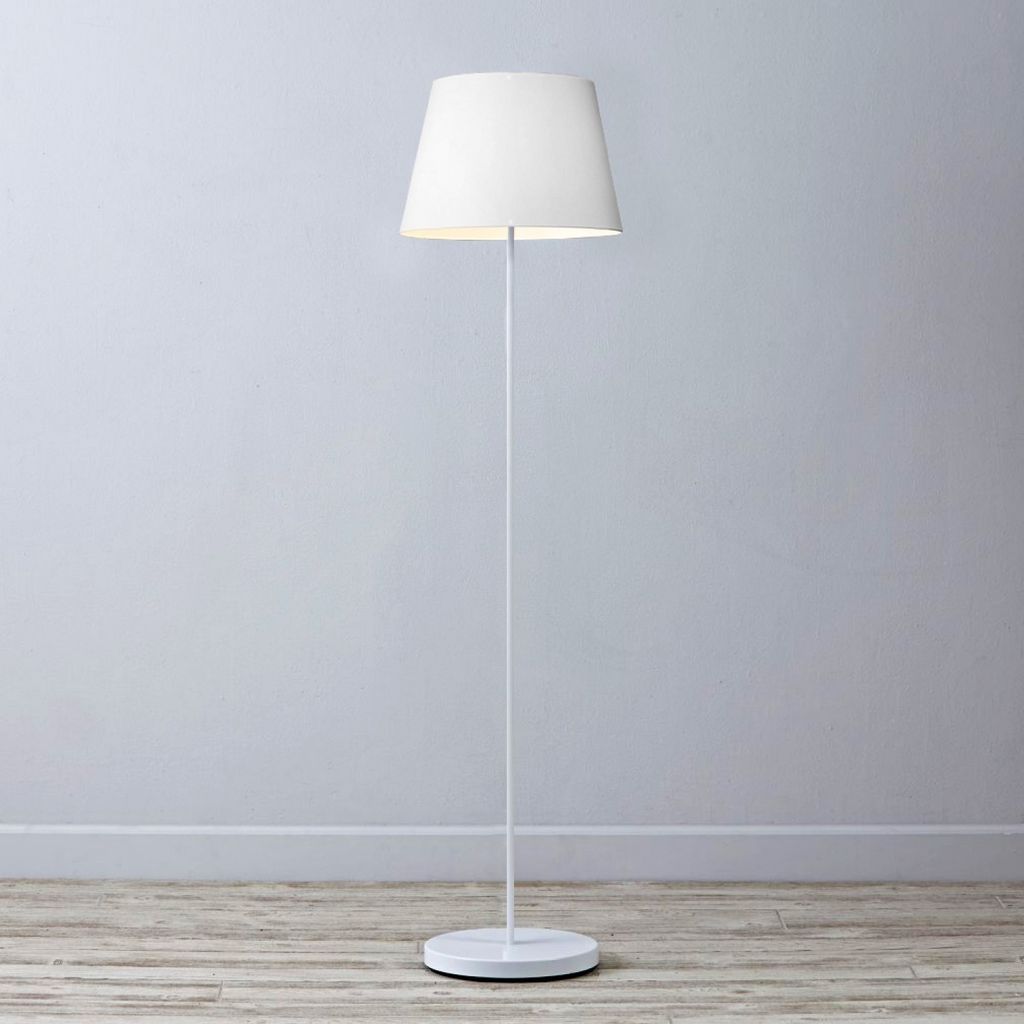
Slide Ali Baba Floor Lamp
Tip: Consider models like the Flos Ray F1 Floor Lamp or Slide Ali Baba Floor Lamp, which combine slender shapes with designer appeal—perfect for tight spaces that still deserve attention.
Achieving Layered Lighting for Balance
Layered lighting combines ambient, task, and accent lighting to create depth and balance in a room.
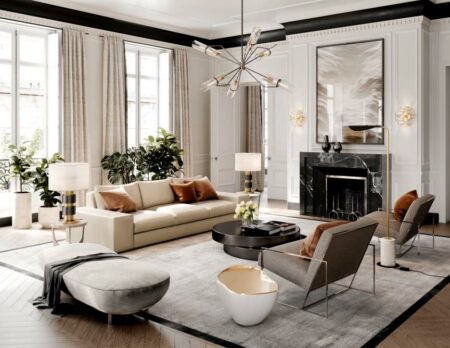
a. Ambient Lighting
- Ambient lighting provides general illumination for the entire space. Replace harsh ceiling lights with:
- Floor lamps that direct light upward to brighten ceilings.
- Large table lamps that evenly distribute light at eye level.
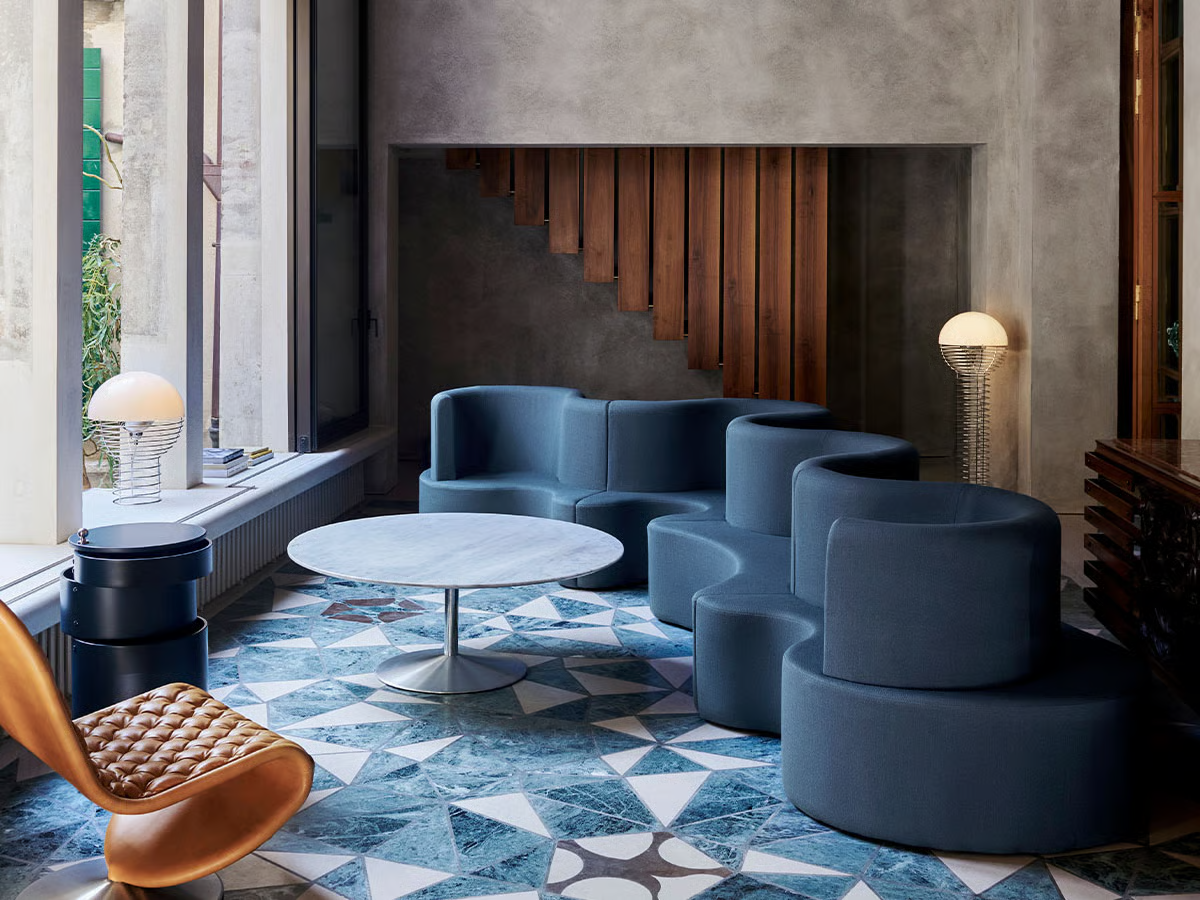
Verpan Wire Floor Lamp
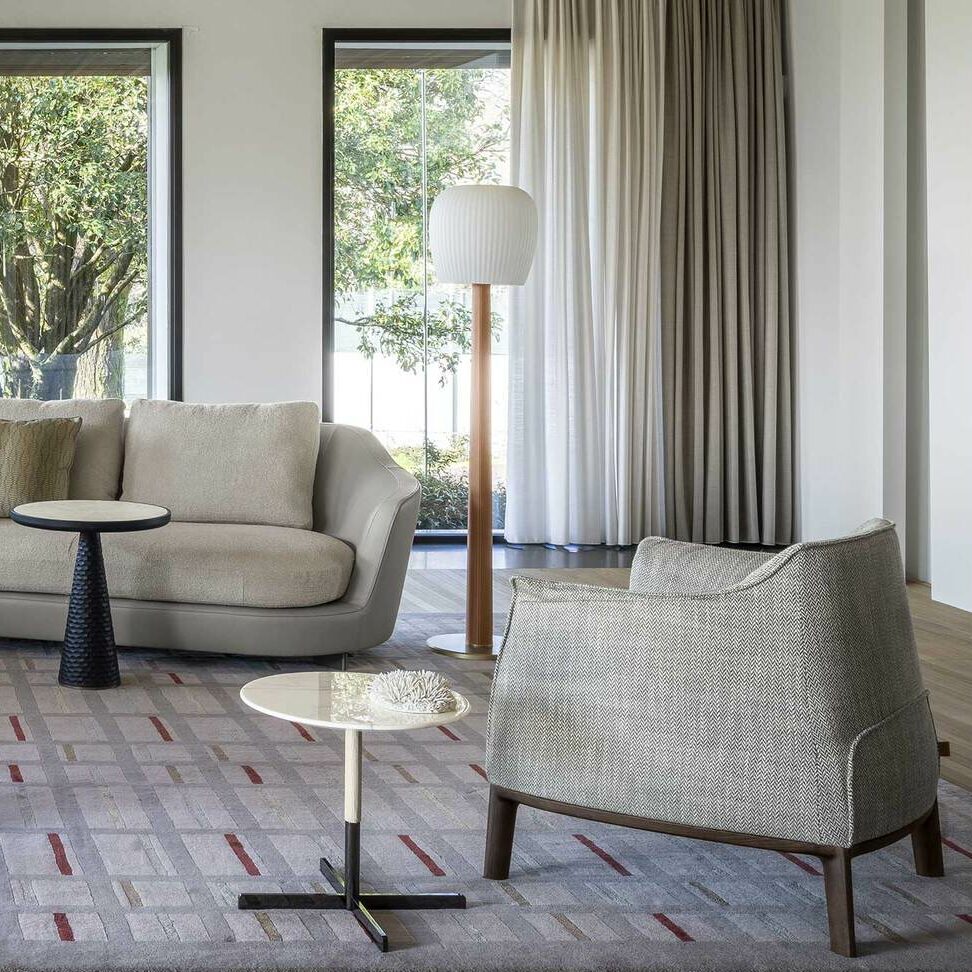
Poltrona Frau Nymph Floor Lamp
For example, the Verpan Wire Floor Lamp and the Poltrona Frau Nymph Floor Lamp are designer favorites for a reason. Often featured in top design blogs and admired by interior stylists, these lamps do more than illuminate — they define the mood. Their soft, upward glow creates a warm and inviting atmosphere that’s both cozy and elegant.
b. Task Lighting with Table Lamps
- Add table lamps near seating areas, desks, or reading corners for functional light.
c. Accent Lighting
- Accent lighting highlights specific areas or features:
- Use small table lamps on shelves, mantels, or bookcases to illuminate decorative pieces.
- Place lamps near windows or architectural features to add layers of light.
Practical Tips for Perfect Lamp Placement
Discovering the best lamp placement for living rooms often involves a bit of experimentation. Follow these practical tips to achieve the ideal look:
- Test Lamp Positions: Borrow lamps from other rooms to test placement before buying new ones.
- Mix Heights: Combine floor and table lamps at different heights to layer light and add visual interest.
- Go Beyond Tables: Place table lamps on shelves, bookcases, or mantels for a creative touch.
- Adjust Lampshades: Swap bright or bold lampshades with softer, muted ones for a cozier feel.
- Change Bulbs: Use LED bulbs for energy efficiency and adjust the color temperature for the desired ambiance (e.g., warm yellow for coziness, cool white for brightness).
Tip: Small changes, like adjusting lamp heights, swapping lampshades, or trying new bulbs, can have a significant impact on the overall atmosphere of your living room.
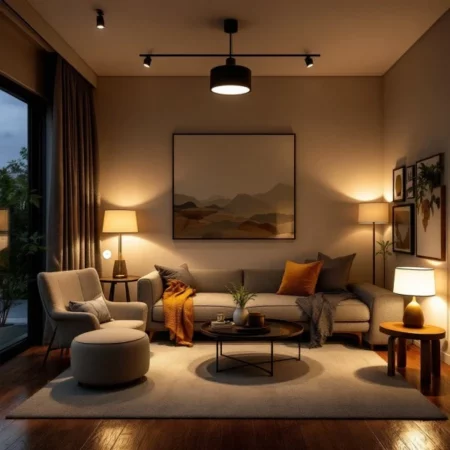
Conclusion
Knowing where to place table lamps in a living room allows you to strike the perfect balance between function, style, and ambiance. Whether you’re using lamps for task lighting, creating cozy corners, or layering light to highlight architectural features, thoughtful placement makes all the difference.
Start by experimenting with floor lamps for general illumination, table lamps for task lighting, and accent lighting to highlight unique features. Keep in mind that achieving the best lamp placement for living rooms takes creativity and patience, but even small adjustments can dramatically transform your space.

